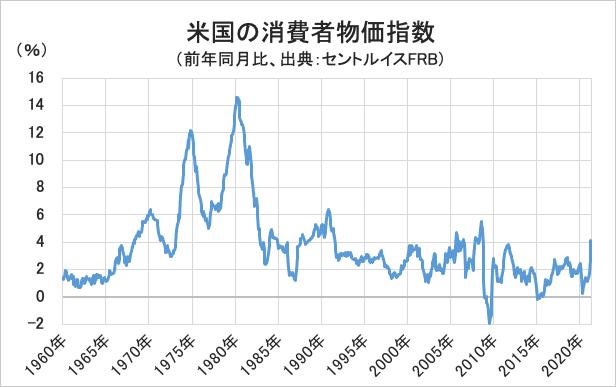Why does rising oil and gas prices lead to inflation?
Reason for soaring global energy prices
The WTI crude oil price, which serves as an indicator of crude oil prices in North America, averaged $71.53 in December 2021, and will continue to increase in 2020. It is up 52% from $47.05 in December. The current price on January 21, 2022 is in the $83 range and is on an upward trend.
Similarly, the Henry Hub natural gas price, an index of natural gas prices in North America, will average $3.73 in December 2021, up 47% from $2.54 in December 2020. Did. After all, the current price is in the $ 4 range and is still in the high price range.
One of the main reasons why energy prices such as crude oil and natural gas are soaring around the world is that global warming countermeasures have been taken too hastily. This is because the Paris Agreement adopted at the 21st Conference of the Parties to the United Nations Framework Convention on Climate Change (COP21) in December 2015 has begun a full-scale trend toward reducing greenhouse gas emissions.
In the process of that trend, energy companies around the world have significantly reduced development investment in oil and coal, which emit a lot of carbon dioxide. As a result, the balance between supply and demand has collapsed, and the price of energy resources has skyrocketed.
Especially in Europe, which is enthusiastic about global warming countermeasures, it has significantly reduced investment in oil and coal, and has promoted huge investment in renewable energy such as wind power generation. At the same time, we have increased our consumption of natural gas, which emits less carbon dioxide.
However, since last year, the expected winds have not blown in Europe, and the output of wind power generation has dropped significantly. As natural gas-fired power generation compensated for the decrease, the European natural gas price in December 2021 will be $38.03, up 6.5 times compared to December 2020, and 10 times the US price at the same time. It has risen to super.

Why Rising Energy Prices Push Up Prices
When the price of energy such as oil and natural gas rises, the cost of thermal power generation, which produces most of the world's electricity, rises, pushing up electricity prices. rise. Especially in European countries where the price of natural gas has soared, electricity prices have jumped significantly.
As electricity prices rise, so do metal prices such as iron and copper. This is because metals such as iron and copper consume a large amount of electricity when produced, which greatly increases production costs. As a result, metal manufacturers are forced to scale back production, and here again the balance between supply and demand is broken.
In addition, when the price of oil and natural gas rises, so does the price of ethylene, a core product of oil and gas chemical manufacturers. Ethylene is a basic raw material for petrochemical products, and is widely used as a basic raw material for plastics, synthetic fibers, vinyl chloride, paints, detergents, and pharmaceuticals.
As you can see from the diagram below, what is produced from ethylene is obvious, but more products are made than you might think. In other words, it is safe to say that if we have metals such as iron and copper and ethylene, we can make various products that are necessary for our daily lives.
Modern agriculture is also heavily dependent on oil. Agricultural machinery such as tractors mainly uses light oil as fuel, and kerosene is used to heat greenhouses for growing vegetables. If the price of crude oil rises, the prices of diesel oil and kerosene will also rise in tandem, and as production costs rise, grains such as rice, wheat, soybeans, and corn, as well as vegetables, will be priced higher than before.
If the price of wheat rises, the price of bread, noodles, etc. will rise across the board. If the price of corn or soybeans rises, the cost of feed such as chickens, pigs, and cows will rise, and ultimately the prices of chicken, pork, and beef will rise.
For this reason, when the price of energy rises, the impact will spread to the rise in the prices of various things around us, pushing up prices.
Hurry of global warming countermeasures has adverse effects on the economy
The recent rise in global prices is largely due to labor shortages and logistics disruptions due to the corona crisis, but even if these factors Even if the factors are resolved, it will be difficult to increase the production of oil and coal under the major trend of global warming countermeasures.
In short, the trend of rising energy prices worldwide is likely to continue. This means that inflationary pressure will not subside easily.
Looking at the current rate of increase in consumer prices by country/region, the United States is about 7%, and Europe (Eurozone) is about 5%, both of which remain high for the first time in several decades. Due to the strong deflationary mindset, it is less than 1%. However, this is expected to reach 2% after April 2022, as the impact of significant price cuts in mobile phone charges is taken into account.
As the prices of things that we often see at the scene of consumption have risen, the consumer's sense that prices are rising is increasing more than the actual situation. In the current situation where the inflation rate exceeds the wage increase rate, people in all countries will gradually refrain from consumption due to a decline in purchasing power, which will have no choice but to be aware of the risk of adverse effects on the economy.